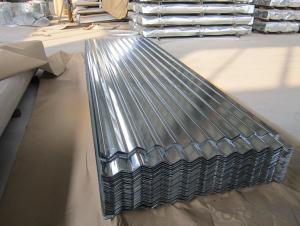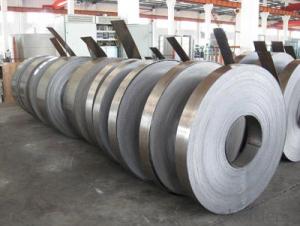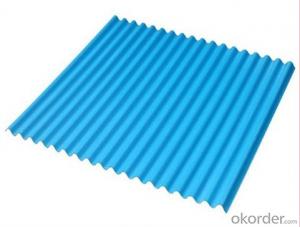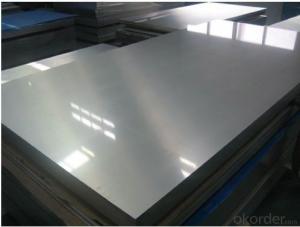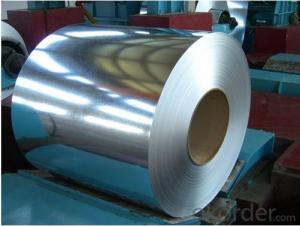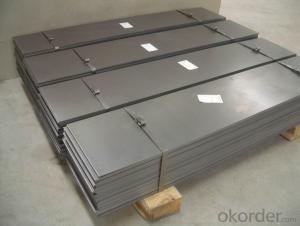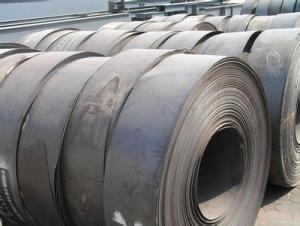High grade hot rolled narrow strip steel
- Loading Port:
- Tianjin
- Payment Terms:
- TT OR LC
- Min Order Qty:
- 300 m.t.
- Supply Capability:
- 5000 m.t./month
OKorder Service Pledge
OKorder Financial Service
You Might Also Like
Definition
Edit
Strip steel
The strip generally supplied in rolls, has the advantages of high size precision,good surface quality, easy processing, material saving etc.. With the same steel plate, strip by strip material is divided into ordinary and high quality strip steel two categories; according to the manufacturing method of hot rolled strip,cold rolled strip two.
2 scope of application
Edit
Steel is widely used in the production of welded steel pipe as blank, cold-formed steel, manufacturing bicycle frame, wheels, clamps, washer, spring film,saw blade, metal products and blade etc..
Cold-formed steel
In broadband steel
The 3 process
Edit
The production process of cold rolled strip steel is generally: picklinglubrication, rolling, process, anneal and flat, cutting, packaging.
Cold rolled strip steel pickling rolling process: -- -- -- -- the size of synchronousrolling annealing lubricating antirust oil length -- -- -- flat polished package
Hot strip rolling heating furnace dephosphorization machine: -- -- -- --phosphorus removal roughing mill machine finishing mill surface quality inspection instrument -- -- -- -- layer cold coiler bundling machine -- number spraying machine -- volume base slab
The production process of hot rolling strip steel: first in the heating furnace of increasing the temperature to the desired temperature of rolling, and then oxidized to tin machine generated on the slab roller into the roughingphosphorus removal treatment, then enter the width and thickness of striproughing rolling unit rolling, iron oxide by roller conveying to phosphorus on the strip surface finishing machine produce processing, enter the width and thickness of strip finishing rolling unit for more precision rolling, strip by rollerby layer on the surface temperature of cold roll strictly control take before and after, enters the coiler for steel coil finally bundling, spraying number into thevolume storage packaging.
4 Market
Edit
In May 20th Shengfang steel prices down. According to the data Chineseindustry insight network show: Hebei forward, Sheng Bao, Bazhou Xinya, the new crown made 2.5* (232-355) steel price is 3400 yuan (ton price, the same below), down 50 yuan more than last Friday.
Influenced by Tangshan last week, small narrow billet prices, Saturday (18 days) in Shengfang area with steel mills have lowered the ex factory price. The price decline, turnover performance in general, opened today manufacturersoffer temporary stability. In addition, the Tangshan area steel prices also have lowered, 355mm strip retail pricing million in 3320-3350, with the local price difference between 50-80 yuan, relatively reasonable.
Today Tangshan small narrow band market prices show small to rise, and the futures, electronic disk also rise, but the rise of strength are insufficient. At present, the overall trend of steel spot market downturn, but the steel market is restricted by the supply pressure, the market price is the emergence of the continuing rise in prices. And will soon enter the consumer off-season, terminaldemand release rate has slowed down, expected short-term local steel marketprice is still dominated by the shock consolidation.
5 Classification
Edit
Hot rolled strip
1, hot rolled ordinary carbon structural steel (GB3524-83)
Strip steel
Hot rolled plain carbon steel with ordinary carbon structural steel as material,made of 1.80-6.00mm hot rolled strip thickness, width of 50-1200mm.
(1) the main purposes
Mainly used for cold rolling billet, cold-formed steel billet, welded steel pipebillet and bicycle, hardware products manufacturing.
(2) grade and chemical composition of materials
Standards and grades
National standard
Quite foreign standard
Function and use
Material categories
The implementation of standards
Grade
Standard No.
Grade
Suitable for manufacturing of cold forming parts
Low carbon steel coil
Q/BQB302
SPHC
JISG3131
SPHC
SPHD
SPHD
SPHE
SPHE
SAE1006/SAE1008
SAE1006/SAE1008
XG180IF/200IF
XG180IF/200IF
Steel for general structure
GB/T912-1989
Q195
JISG3101
SS330
For general construction of buildings, bridges, ships, vehicles, etc.
Q235B
SS400
SS400
SS490
ASTMA36
SS540
(3) the mechanical properties
The nominal thickness
The yield strength (Mpa)
Tensile strength (Mpa)
Elongation of A50mm%
The 180 degree bend test
>1.5-2.5
Less than or equal to 290
More than 310
More than 38
D=0a
>2.5-3.0
Less than or equal to 290
More than 300
More than 38
D=0a
>3.0-4.0
Less than or equal to 290
More than 300
More than 40
D=1/2a
Use of hot-rolled steel 2, bicycle (GB3645-89)
Bicycle for hot rolled wide strip steel in carbon steel and low alloy steel asmaterial, made of 1.8-8.0mm strip steel thickness after hot rolling, the strip width can reach 1300mm.
(1) the main uses special for bicycle manufacturing materials.
(2) grade and chemical composition of materials
(3) the mechanical properties
(4) strip (board) size
The thickness of the steel plate strip thickness 1.8-6.0mm, 7, 8.0mm.
Strip (board) width: rimming steel is less than or equal to 1300mm (a=2.0-6.0)
Killed steel is less than or equal to 1250mm (a = 3)
Less than or equal to 1300mm (a = 3)
The length of the plate, steel coil diameter 760mm, 4-6m plate.
Hot rolled strip with 3, bicycle (GB3647-89)
(1) the main purposes
Bicycle designed for the manufacture of hot rolled strip of bicycle and the chain, also can be used for cold rolled and welded pipe blank blank.
(2) grade and chemical composition of materials
(3) the mechanical properties
(4) the specification of strip
Bicycles are generally used for hot rolled strip steel strip thickness of 1.8-8.0mm, width of 60-250mm.
Hot rolled strip with 4, pressure vessel (GB5681-85)
(1) the main purposes
Used in the manufacture of low pressure vessel.
(2) grade and chemical composition of materials
(3) the mechanical properties
(4) the specification of strip and production unit
Pressure vessel is generally used for hot rolled strip steel strip thickness of 4mm, width of 80mm double length, length of not less than 70m (volume).
Cold rolling of strip
(1) the main purposes
Cold-rolled carbon steel for the manufacture of bicycles, sewing machines,agricultural machinery and other accessories and hardware products.
(2) grade and chemical composition of materials
Grade
Supply standard
Supply size
Use
SPCC
Q195
Q235-B
GB/T912
GB/T3274
Width
Mm
Thickness
Mm
Widely used in engineering machinery, transportation machinery, construction machinery, hoisting machinery。
- Q:How are steel strips inspected for defects?
- To guarantee the quality and integrity of steel strips, a range of inspection methods are employed to identify any defects. Visual inspection is a common technique, involving trained inspectors who visually assess the surface of the strips for visible flaws like cracks, scratches, or deformities. Magnifying glasses or microscopes are often used to detect even the smallest imperfections. Another method used for defect inspection is magnetic particle testing. This involves magnetizing the steel strips and applying fine iron particles to the surface. Defective areas attract these particles, allowing inspectors to easily locate and identify the defects. Ultrasonic testing is also utilized to inspect the steel strips for defects. Ultrasonic waves are directed into the steel, and the reflections or echoes of these waves are analyzed. Any changes or irregularities in the echo pattern indicate the presence of defects. Eddy current testing is another widely used method for defect detection. By passing an alternating current through a coil, a magnetic field is created. When the steel strip is placed near the coil, any defects or variations in the material cause changes in the eddy currents, which can be detected and analyzed. Additionally, X-ray or gamma-ray testing may be employed for defect inspection. Radiation is passed through the steel strips, and the resulting image is captured on film or a digital detector. Defects such as internal cracks or voids appear as dark spots on the image, making them easily identifiable. Overall, a combination of visual, magnetic particle, ultrasonic, eddy current, and radiographic inspections is conducted to ensure that steel strips are defect-free and meet the necessary quality standards. These rigorous inspection methods guarantee the reliability and safety of steel strips in various industries.
- Q:What is the thickness range of a steel strip?
- The specific application and manufacturing process contribute to the variability in the thickness range of a steel strip. Typically, steel strips span from extremely thin, measuring approximately 0.001 inches (0.0254 mm), to considerably thicker strips reaching several inches in thickness. The intended use in industries like construction, automotive, or manufacturing dictates the required thickness of the steel strip.
- Q:How are steel strips used in the production of metal packaging?
- Steel strips are used in the production of metal packaging in various ways. One common application is in the creation of metal cans, such as those used for food and beverages. Steel strips are first rolled into thin sheets and then cut into specific sizes and shapes to form the body of the can. These strips provide the necessary strength and durability to withstand the pressure and weight of the contents inside the can. Additionally, steel strips are utilized in the production of metal lids and closures for cans. These strips are shaped and formed into the desired lid design and then attached to the can body. The use of steel strips ensures that the lids are tightly sealed, preventing any leakage or contamination of the packaged goods. Steel strips also play a crucial role in the production of metal drums and barrels. These containers are commonly used for storing and transporting various liquids, chemicals, and hazardous materials. The steel strips are rolled and welded together to form a sturdy cylindrical structure, capable of withstanding the weight and pressure exerted by the contents. The strips are also instrumental in providing the necessary rigidity and strength to prevent any deformation or damage to the drum during handling and transportation. In summary, steel strips are essential components in the production of metal packaging. They are used to create the body of cans, lids, and closures, as well as the structure of drums and barrels. The versatility and strength of steel make it an ideal material for ensuring the integrity and safety of the packaged goods.
- Q:How are steel strips processed for plating?
- Steel strips are typically processed for plating through a series of steps. First, the strips are cleaned to remove any impurities or contaminants. This is followed by surface preparation, which may involve mechanical processes like grinding or sanding to ensure a smooth and even surface. Next, the strips are often treated with chemicals or acid solutions to further clean and activate the surface, promoting better plating adhesion. Finally, the steel strips are immersed in a plating bath where a layer of the desired metal, such as nickel or zinc, is deposited onto the surface through an electrochemical process.
- Q:What are the different surface finishing methods for steel strips?
- There are several different surface finishing methods available for steel strips, each offering unique benefits and characteristics. 1. Hot-dip galvanizing: This is a popular method where the steel strip is immersed in a bath of molten zinc. The zinc coating provides excellent corrosion resistance and protects the steel from the elements. 2. Electroplating: In this method, a thin layer of metal is deposited onto the steel strip through electrolysis. Common metals used for electroplating include chromium, nickel, and zinc. Electroplating enhances the appearance of the strip and provides added protection against corrosion. 3. Powder coating: This process involves applying a dry powder onto the steel strip, which is then baked in an oven. The heat causes the powder to melt and form a durable and attractive coating. Powder coating offers excellent corrosion resistance and can be customized in various colors and finishes. 4. Painting: Steel strips can be painted using different types of coatings, such as epoxy, polyurethane, or enamel. The paint provides aesthetic appeal and also acts as a barrier against corrosion and weathering. 5. Passivation: This method involves treating the steel strip with a passivating agent to remove any contaminants and create a protective oxide layer on the surface. Passivation improves the resistance of the steel against rust and corrosion. 6. Anodizing: Typically used for aluminum, anodizing can also be applied to steel strips. In this process, the strip is treated with an electrolyte, causing a controlled oxidation to occur on the surface. Anodizing provides a durable and corrosion-resistant finish. 7. Mechanical finishing: This method involves mechanically altering the surface of the steel strip to achieve the desired finish. Examples include grinding, polishing, brushing, or shot blasting. Mechanical finishing can enhance the appearance of the strip and also improve its surface smoothness. By utilizing these different surface finishing methods, steel strips can be effectively protected against corrosion, improved in appearance, and tailored to meet specific application requirements. The choice of finishing method depends on factors such as the intended use of the strip, desired aesthetics, and environmental conditions it will be exposed to.
- Q:What are the common challenges in manufacturing steel strips?
- Some common challenges in manufacturing steel strips include ensuring consistent thickness and width throughout the strip, preventing surface defects such as scale and scratches, maintaining proper flatness and straightness, achieving desired mechanical properties, and managing temperature control during the manufacturing process. Additionally, quality control and ensuring compliance with industry standards and customer specifications are also important challenges in steel strip manufacturing.
- Q:What are the different surface plating methods for steel strips?
- There are several different surface plating methods that can be used for steel strips, depending on the desired outcome and intended application. Some of the most common methods include: 1. Galvanizing: This is a process where steel strips are coated with a layer of zinc to provide corrosion resistance. The steel strips are immersed in a bath of molten zinc or are electroplated with zinc. Galvanizing can be done through hot-dip galvanizing or electro-galvanizing. 2. Electroplating: This method involves coating the steel strips with a layer of metal through an electrochemical process. Common metals used for electroplating include nickel, chrome, tin, and copper. Electroplating can improve corrosion resistance, enhance appearance, and provide wear resistance. 3. Tin plating: This method involves depositing a layer of tin onto the steel strips. Tin plating provides excellent corrosion resistance and is commonly used for food packaging and electronic components. 4. Nickel plating: Nickel plating is a process where steel strips are coated with a layer of nickel. This method provides corrosion resistance, wear resistance, and can improve the appearance of the steel strips. 5. Chromium plating: Chromium plating involves depositing a layer of chromium onto the steel strips. This method provides excellent corrosion resistance, hardness, and improves the aesthetic appeal of the steel strips. It is commonly used for decorative applications and in industries where corrosion resistance is crucial. 6. Organic coating: This method involves applying a protective layer of organic material, such as paint or powder coating, onto the steel strips. Organic coatings provide corrosion resistance, improved appearance, and can be customized for various applications. It is important to consider the specific requirements and conditions of the steel strips' application when choosing the appropriate surface plating method. Each method has its advantages and limitations, and the selection should be based on factors such as corrosion resistance, wear resistance, cost-effectiveness, and aesthetic preferences.
- Q:What are the different thickness options for steel strips?
- The different thickness options for steel strips can vary depending on the specific application and industry requirements. However, common thickness options for steel strips range from as thin as 0.005 inches (0.13 mm) to as thick as 0.25 inches (6.35 mm) or more.
- Q:How do steel strips contribute to reducing waste generation in various applications?
- Steel strips contribute to reducing waste generation in various applications in several ways. Firstly, steel strips are highly durable and long-lasting, which means they can be used for a longer period of time without the need for replacement. This reduces the amount of waste generated from frequent replacements of other materials. Secondly, steel strips can be easily recycled. Steel is a highly recyclable material, and steel strips can be melted down and reused to produce new steel products. This reduces the demand for new steel production, which in turn reduces the amount of waste generated from the extraction and processing of raw materials. Additionally, steel strips can be designed to be lightweight, yet strong and sturdy. This allows for the use of thinner steel strips in various applications, such as packaging, automotive, and construction industries. The use of thinner steel strips means less material is required, resulting in less waste generation during the production process. Moreover, steel strips can be used in modular systems, where they can be easily assembled and disassembled. This allows for the reuse of steel strips in different applications or the replacement of damaged parts without the need to discard the entire product. This not only reduces waste generation but also promotes a more sustainable and circular economy. In conclusion, steel strips contribute to reducing waste generation in various applications through their durability, recyclability, lightweight design, and potential for reusability. By incorporating steel strips into different industries, we can minimize waste, conserve resources, and move towards a more sustainable future.
- Q:How are steel strips used in the manufacturing of automotive drivetrains?
- Steel strips are commonly used in the manufacturing of automotive drivetrains for various applications. They are used to create gears, shafts, and other components that require high strength and durability. These strips are often cut, shaped, and formed to specific dimensions to provide precise fit and performance. Additionally, steel strips are frequently used as a base material for heat treatment processes, such as hardening and tempering, to enhance the mechanical properties of the drivetrain components.
1. Manufacturer Overview |
|
|---|---|
| Location | |
| Year Established | |
| Annual Output Value | |
| Main Markets | |
| Company Certifications | |
2. Manufacturer Certificates |
|
|---|---|
| a) Certification Name | |
| Range | |
| Reference | |
| Validity Period | |
3. Manufacturer Capability |
|
|---|---|
| a)Trade Capacity | |
| Nearest Port | |
| Export Percentage | |
| No.of Employees in Trade Department | |
| Language Spoken: | |
| b)Factory Information | |
| Factory Size: | |
| No. of Production Lines | |
| Contract Manufacturing | |
| Product Price Range | |
Send your message to us
High grade hot rolled narrow strip steel
- Loading Port:
- Tianjin
- Payment Terms:
- TT OR LC
- Min Order Qty:
- 300 m.t.
- Supply Capability:
- 5000 m.t./month
OKorder Service Pledge
OKorder Financial Service
Similar products
New products
Hot products
Hot Searches
Related keywords







